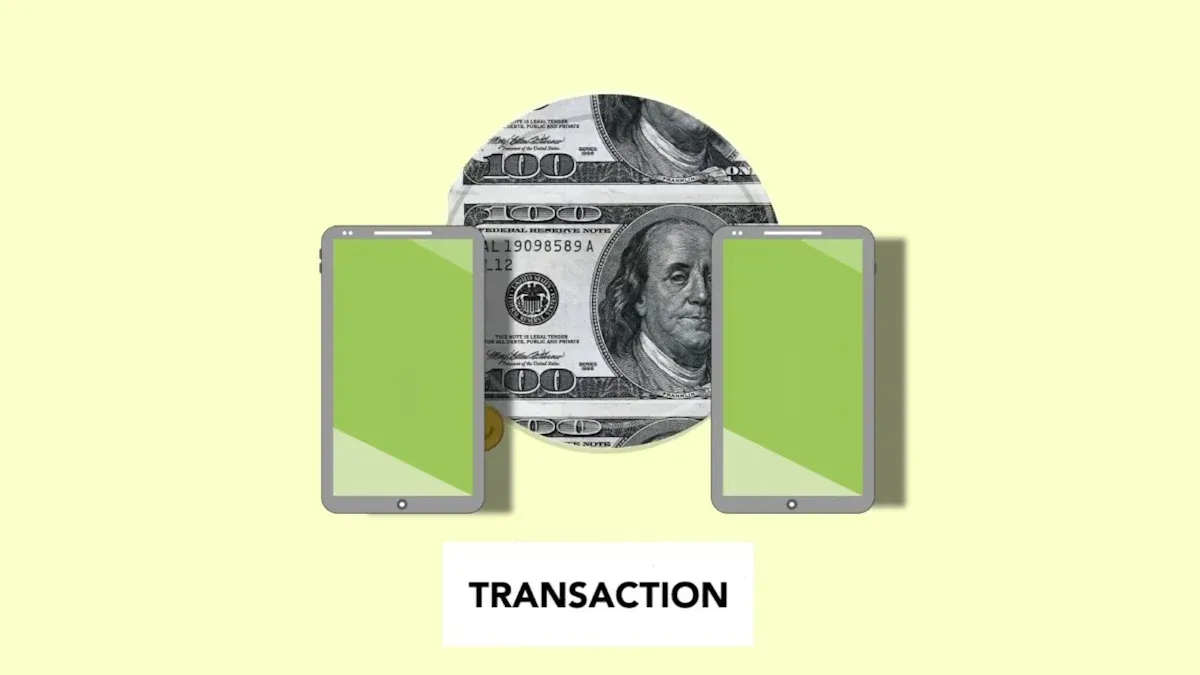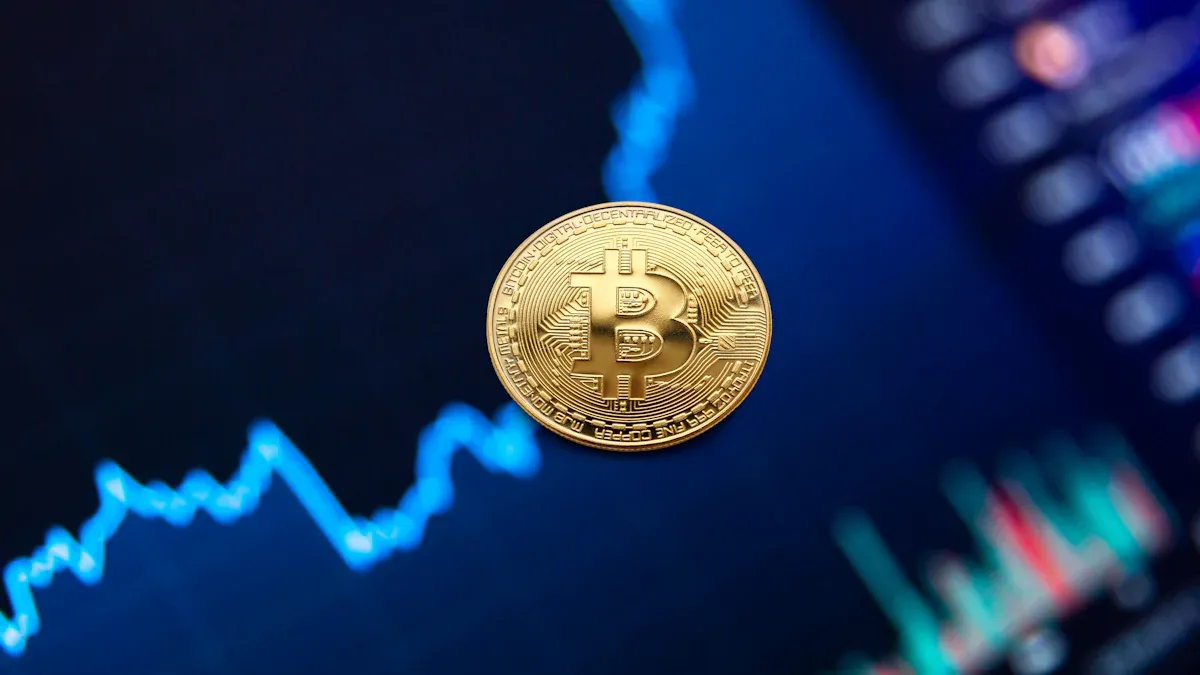- EasyCard
- Trade
- Help
- Announcement
- Academy
- SWIFT Code
- Iban Number
- Referral
- Customer Service
- Blog
- Creator
Global Capital Flow Accelerator: Advantages and Challenges of Stablecoin Cross-Border Transfers

Image Source: unsplash
You can think of stablecoins (such as USDT and USDC) as a kind of “digital dollar.” They are changing the way global funds flow with low costs and high efficiency.
Imagine this scenario: you are a freelancer who has just completed an overseas project.
- Traditional bank wire transfer: Funds need to wait 1 to 5 business days, and pay an average fee of about 45 dollars.
- Stablecoin transfer: Funds arrive in your digital wallet within minutes, with network fees usually less than 1 dollar.
This huge difference is the core charm of stablecoin cross-border transfers. Mainstream stablecoins like USDT have a market size reaching hundreds of billions of dollars, showing their enormous potential as a payment tool.
Key Points
- Stablecoin transfers are fast in speed, low in fees, and more convenient than traditional bank remittances.
- Stablecoin transfers do not require banks; global payments can be completed with a mobile phone.
- Using stablecoins carries risks, such as possible price instability and asset theft.
- Choosing secure platforms and wallets, carefully verifying addresses and networks, can protect your fund security.
- Conducting small-amount tests before large transfers can avoid losses due to operational errors.
Core Advantages of Stablecoin Cross-Border Transfers

Image Source: pexels
When you choose stablecoins for cross-border payments, you are actually utilizing a disruptive financial technology. It mainly transforms the traditional remittance experience through the following three aspects.
Minute-Level Arrival: 7x24 Hour Global Transfers
Traditional cross-border wire transfers rely on the banking system. This means your fund flows are limited by bank operating hours, weekends, and public holidays. A payment from Europe to Asia may need to wait 2 to 3 business days due to time differences and cutoff times.
Stablecoins completely break these restrictions.
They operate on blockchain technology, which is a 24/7, year-round global digital ledger. Your transfers no longer need to wait for banks to open. No matter when or where, as long as there is internet, you can complete payments within minutes. For example, on high-performance networks like Tron, transaction confirmations only take a few seconds. This near-real-time settlement speed forms a stark contrast with traditional wire transfers’ T+1 to T+5 business day model, greatly improving fund turnover efficiency.
Extremely Low Costs: Farewell to High Fees
The cost of traditional remittances is very high. World Bank data shows the global average cost for remitting 200 dollars is about 6.2%. This means for every 200 dollars remitted, you may pay over 12 dollars in fees.
Stablecoin cross-border transfer costs are much lower.
Cost Comparison Overview:
- Traditional bank transfer: Global average cost 6.2%
- Stablecoin transfer: Transaction cost usually less than 1.5%
Stablecoin transfer fees are mainly determined by the blockchain’s network fee (Gas Fee), which is unrelated to the transfer amount. The network you choose determines the cost level.
| Network | Transaction Fee (USDT/USDC) | Features |
|---|---|---|
| TRC-20 (Tron) | Usually less than 1 dollar | Fast speed, extremely low cost, suitable for small-amount high-frequency transfers |
| ERC-20 (Ethereum) | Ranges from a few dollars to over 20 dollars | High security, but expensive during network congestion |
For over 1.5 million freelancers in the Philippines, this cost saving is tangible. They used to pay 5-8% fees when receiving overseas payments via traditional platforms. Now, by receiving USDC or USDT, they can reduce this fee by over 90%, significantly increasing their actual income.
No Bank Needed: Simplifying Global Receipt and Payment Processes
Have you ever thought that international transfers can completely bypass banks? Stablecoins make this possible.
Traditional international payments rely on the SWIFT network, with funds flowing through multiple intermediary banks, making the process complex and slow. Stablecoin cross-border transfers support direct peer-to-peer (wallet-to-wallet) transactions. You exchange local currency into stablecoins, send them via the blockchain network to the recipient, who then exchanges them into their local currency. The entire process does not go through any bank intermediaries.
This model is especially important for regions with limited banking services. In Southeast Asia, about 73% of the population lacks bank accounts, but smartphone penetration in places like the Philippines and Indonesia has exceeded 55%. This means many people cannot access bank services but can easily conduct global receipts and payments through digital wallets on smartphones. This provides individuals and SMEs in developing countries with a powerful, convenient global payment settlement tool.
Risks and Challenges Behind the Opportunities

Image Source: pexels
The efficiency and low costs brought by stablecoins are attractive, but you must clearly recognize that this is not a risk-free path. Before enjoying the convenience, understanding and preparing to address potential challenges is the first step to protecting your asset security.
Regulatory Policies: Compliance Uncertainty
Stablecoins are under the global regulatory spotlight. Governments worldwide are striving to balance financial innovation with monetary stability, leading to a complex and ever-changing regulatory environment.
Global regulators are working toward common goals, such as requiring stablecoins to have high-quality reserves, ensuring user redemption rights, and complying with anti-money laundering (AML) rules. However, specific policies vary greatly across countries and regions, bringing you compliance uncertainty.
Overview of Regulatory Dynamics in Major Global Economies:
- United States: Legislation (such as the GENIUS Act) is clarifying a federal-level regulatory framework to consolidate the digital dollar’s position. This paves the way for large compliant stablecoins (like USDC) in the US.
- European Union: The Markets in Crypto-Assets Regulation (MiCA) is fully implemented. But it sets trading caps on non-euro stablecoins, potentially limiting widespread use of dollar stablecoins in Europe.
- Asia and Middle East: Regions like Singapore, Japan, and the UAE adopt more open attitudes, allowing banks or licensed institutions to issue stablecoins, rapidly becoming key innovation hubs.
This regulatory “fragmentation” means a stablecoin fully compliant in Singapore may not meet EU or US regulations. When conducting stablecoin cross-border transfers, you may face legal and operational risks due to differing regional laws.
Market and Security: Price De-pegging and Asset Theft
Beyond macro policy risks, you need to focus on market and technical risks that directly affect your fund security.
First is price de-pegging risk. The core promise of stablecoins is a 1:1 peg with fiat currencies like the dollar. But this peg is not absolutely reliable.
Case Warning: UST Collapse In 2022, the algorithmic stablecoin UST and its sister token LUNA had fatal design flaws, causing prices to collapse rapidly under market selling pressure. This event evaporated about 60 billion dollars in market value within days and triggered intense turbulence in the entire crypto market.
This case tells you that not all stablecoins are equally safe. Their stability depends on underlying reserve assets. Current mainstream stablecoins are mainly backed by real assets, but their transparency and asset composition differ.
| Feature | USDT (Tether) | USDC (Circle) |
|---|---|---|
| Reserve Assets | Mix of cash, US Treasuries, corporate bonds, precious metals, Bitcoin, etc. | Cash and short-term US Treasuries |
| Transparency | Lower, previously scrutinized for reluctance to disclose full reserve composition | Higher, monthly public reserve attestations by top accounting firms |
| Regulatory Compliance | Faces compliance challenges in some regions (like EU) | Actively seeks and meets major market regulatory requirements (like MiCA) |
Second is asset theft risk. Digital asset security highly depends on your own secure operations. Common threats include:
- Phishing scams and fake wallets: Attackers create fakes identical to official sites or wallets, tricking you into entering private keys or seed phrases, stealing all your assets.
- Exchange hacks: Even well-known centralized exchanges can suffer user fund losses from hacker attacks.
- Smart contract vulnerabilities: When using some DeFi applications, code vulnerabilities in smart contracts can be exploited by hackers, leading to fund theft.
- Malware: Once your computer or phone is implanted with malware, your passwords and keystrokes may be stolen.
Fiat Exchange: Practical Barriers to On/Off-Ramping
Securely transferring stablecoins to the recipient is just the first step. Closing the loop—exchanging stablecoins into local fiat currency (known as “off-ramping”)—is equally challenging. This is a crucial part of the stablecoin cross-border transfer experience.
To complete off-ramping, you typically use the following channels:
- Centralized exchanges: The most mainstream way. You register an account on the exchange, complete identity verification (KYC), sell the stablecoin for fiat like dollars, then withdraw to your bank account.
- P2P platforms: Peer-to-peer trading platforms where you directly trade with individuals wanting to buy stablecoins, who pay you via local bank transfer, etc.
- Over-the-counter (OTC): For large transactions, professional OTC providers offer more competitive rates and personalized services.
At this step, you face several practical barriers:
- Additional costs: Exchange trading fees, withdrawal fees, or P2P exchange rate spreads all increase your total cost.
- Compliance reviews: To comply with AML regulations, almost all compliant channels require detailed identity information and proof of fund source, especially for large off-ramps.
- Channel stability: P2P merchant reputations and exchange policies in different regions can change anytime; finding a long-term stable, secure off-ramp channel requires careful screening.
Stablecoin Transfer Secure Operation Guide
Theoretical knowledge is the foundation, but secure operations are the “moat” for your assets. Follow these three steps to significantly reduce risks in stablecoin cross-border transfers.
Step One: Choose Compliant Platforms and Secure Wallets
Your first step is to select a safe and reliable starting point.
First, you need a compliant trading platform to complete “on-ramping” (purchasing stablecoins with fiat). A good platform should have a solid regulatory record and publicly transparent asset reserve proofs.
Tip: How to Evaluate Platform Security? Focus on these: whether it undergoes third-party security audits, has a user asset insurance fund, provides real-time proof of reserves (PoR), and stores most user funds in offline “cold wallets.”
Second, you need a digital wallet to store and transfer stablecoins. Wallets are mainly divided into two types:
| Feature | Custodial Wallet (e.g., exchange built-in wallet) | Non-Custodial Wallet (e.g., MetaMask, Trust Wallet) |
|---|---|---|
| Private Key Control | Platform holds for you | You fully control |
| Convenience | Simple, recoverable if password forgotten | Must back up seed phrase yourself; loss means permanent asset loss |
| Security | Depends on platform security level | Unaffected by platform hacks, but you must guard against risks |
For large amounts or long-term storage, consider hardware wallets like Ledger or Trezor, which store private keys offline for the highest security level.
Step Two: Familiarize with On-Ramping, Transfer, and Receipt Processes
With tools mastered, next familiarize yourself with the operation flow.
- On-Ramping: Register on a compliant platform (like Coinbase or Kraken) and complete identity verification (KYC). Then deposit dollars via bank transfer or credit card and purchase USDT or USDC.
- Transfer: This is the most error-prone link. You must confirm two things:
- Verify Address: Repeatedly confirm the recipient’s wallet address is correct. Addresses are usually long strings starting with “0x” (Ethereum network) or “T” (Tron network).
- Select Network: Be sure to confirm the same network with the recipient (like TRC-20 or ERC-20). Wrong network selection causes permanent fund loss.
- Confirm Receipt: After transfer, you get a transaction ID (TXID). Paste this ID into the corresponding blockchain explorer (like TRONSCAN or Etherscan) to check if the transaction status shows “success.”
Step Three: Master Core Risk Control Techniques
Developing good risk control habits keeps you away from most traps.
- Enable Two-Factor Authentication (2FA): Enable 2FA for all your trading accounts and wallets. It requires a phone verification code during login or withdrawal, a key defense against account theft.
- Set Withdrawal Whitelist: In the exchange backend, add your commonly used withdrawal addresses to the whitelist. This way, even if the account is hacked, hackers cannot transfer your assets to unknown addresses.
- Conduct Small-Amount Tests: Before large transfers, first do a test transfer with 1-5 dollars. After confirming the recipient successfully receives it, proceed with large operations. Cryptocurrency transfers are irreversible; this avoids huge losses from address or network errors.
- Beware of Investment Scams: Be wary of any “guaranteed high returns, zero risk” investment opportunities. If a stranger enthusiastically guides you to invest and urges quick action, it is highly likely a “pig butchering” scam.
Stablecoins are reshaping global fund flows for individuals and SMEs with their disruptive efficiency and cost advantages. But remember, it is not a perfect solution. The premise of enjoying this convenience is your clear understanding of regulatory, market, and technical risks. We encourage you to view stablecoins as a powerful new financial tool but explore cautiously with a learner’s mindset, using small-amount tests to ensure you protect your assets to the maximum while embracing change.
FAQ
Should I choose USDT or USDC?
It depends on your preference. USDC is backed by cash and short-term US Treasuries, with higher transparency and favored by regulators. USDT has more diverse reserve assets and wider application scenarios. For beginners, starting with the more compliant USDC may be a safer choice.
Why are my transfer fees sometimes high?
Transfer fees are determined by the blockchain network you choose, unrelated to the amount.
| Network | Fee Characteristics |
|---|---|
| TRC-20 | Fees usually less than 1 dollar, fast speed. |
| ERC-20 | Fees can reach over 20 dollars, especially during busy network times. |
Choosing the TRC-20 network can save you significant fees.
Is using stablecoins for cross-border transfers legal?
This depends on the laws of your country or region. Global regulatory policies vary greatly and are constantly changing. Before any transaction, you are responsible for understanding and complying with local laws and regulations. This process may require consulting professional legal advice.
How do I exchange received stablecoins into local currency?
You can “off-ramp” stablecoins through the following ways:
- Sell on compliant centralized exchanges, then withdraw to a bank account.
- Directly trade with individual buyers on P2P platforms.
Note that these channels usually require you to complete identity verification (KYC).
*This article is provided for general information purposes and does not constitute legal, tax or other professional advice from BiyaPay or its subsidiaries and its affiliates, and it is not intended as a substitute for obtaining advice from a financial advisor or any other professional.
We make no representations, warranties or warranties, express or implied, as to the accuracy, completeness or timeliness of the contents of this publication.




Contact Us
Company and Team
BiyaPay Products
Customer Services
BIYA GLOBAL LLC is a licensed entity registered with the U.S. Securities and Exchange Commission (SEC No.: 802-127417); a certified member of the Financial Industry Regulatory Authority (FINRA) (Central Registration Depository CRD No.: 325027); regulated by the Financial Industry Regulatory Authority (FINRA) and the U.S. Securities and Exchange Commission (SEC).
BIYA GLOBAL LLC is registered with the Financial Crimes Enforcement Network (FinCEN), an agency under the U.S. Department of the Treasury, as a Money Services Business (MSB), with registration number 31000218637349, and regulated by the Financial Crimes Enforcement Network (FinCEN).
BIYA GLOBAL LIMITED is a registered Financial Service Provider (FSP) in New Zealand, with registration number FSP1007221, and is also a registered member of the Financial Services Complaints Limited (FSCL), an independent dispute resolution scheme in New Zealand.



















